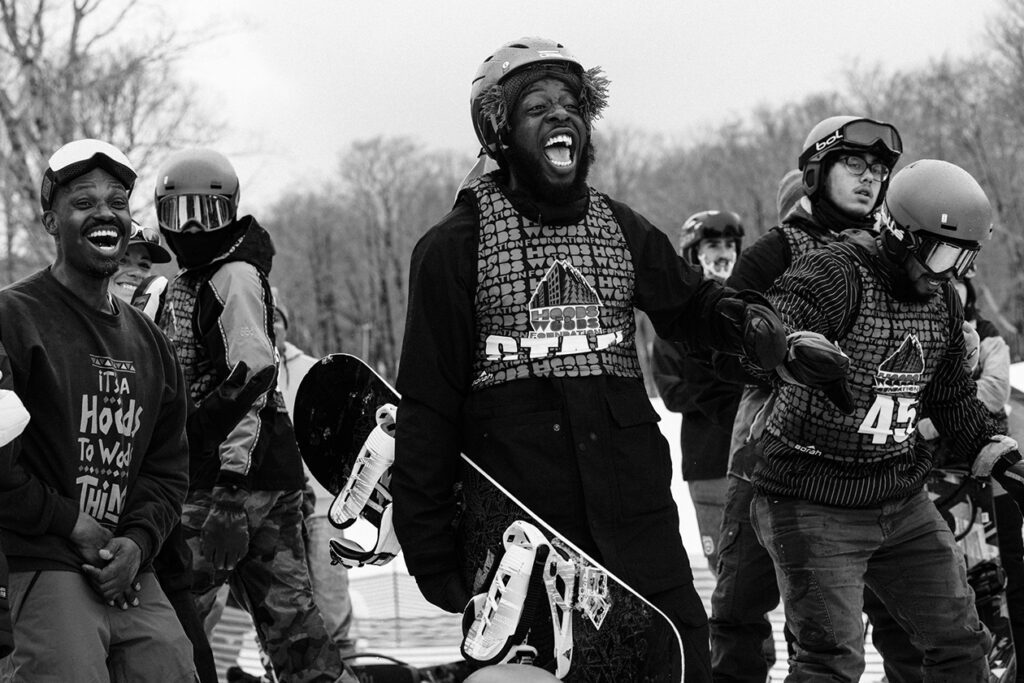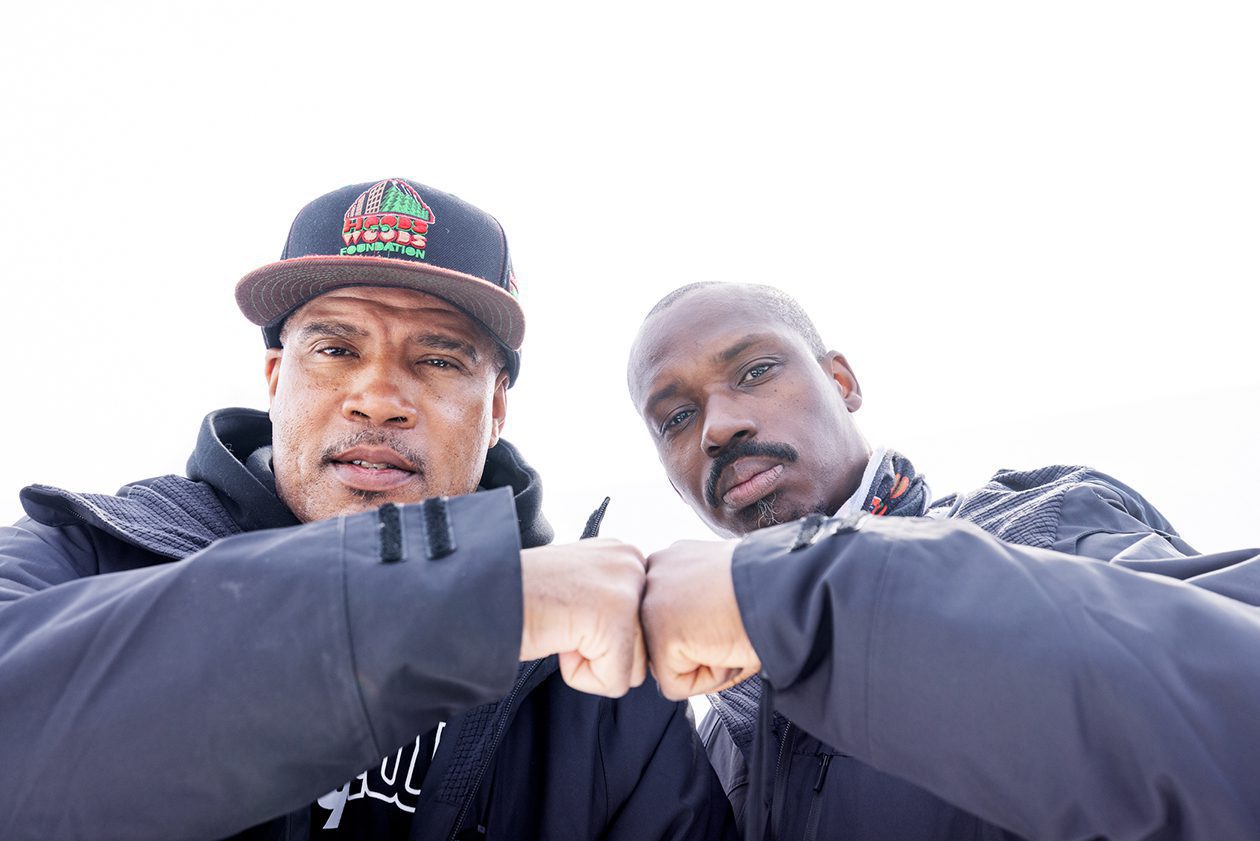Hoods to Woods Re-shaping the Future One Kid at a Time
Interview Stella Pentti
Photos Brian NEVINS
Founders of Hoods To Woods, Brian Paupaw and Omar Diaz, use snowboarding as a tool for change
Our immediate surroundings significantly influence our perception of reality. If everyone we know participates in certain activities, these activities become the norm within our social circle, for better or worse. Growing up in the hood, Brian Paupaw and Omar Diaz, founders of the non-profit foundation Hoods to Woods, understand firsthand how easy it is to get involved with the wrong crowd and how that can impact your future.
Inspired by their own experiences and passion for snowboarding, Omar and Brian have taken it upon themselves to assist people from disadvantaged backgrounds in the New York Tri-City area to find an alternative lifestyle outside the violence and crime prevalent in their communities.
Through Hoods to Woods, they aim to introduce outdoor activities to kids and teenagers who have primarily lived in urban environments, where life in underserved communities in New York City is their everyday reality, often leaving these kids and teenagers unaware of alternative ways of life. By sharing their love for snowboarding, Brian and Omar hope to help shape a different reality for them.
It’s been very inspiring to follow Hoods To Woods’s activities through the years and see how your passion for snowboarding has become a way to show people from disadvantaged backgrounds that there is an alternative way of living outside all the violence and crime they’re often exposed to. But before we dive into that, how did you guys get into snowboarding?
Omar: I first got on a snowboard in 1989. I never saw snowboarding on the East Coast, and I never really knew people who skied or snowboarded because when you’re in the hood, you’re in the hood. You only know your immediate environment. I got a job as a dishwasher at a hotel, and some of the guys there told me about spots on the East Coast where you can go snowboarding.
Brian: I went to Parsons School of Design, and one of my close friends asked if I had ever been to Mount Baker and said, “We have to go out there for a month,” and I said, “How the hell can you go out there snowboarding for a month?!” So, I quit my job and said, “Fuck it, let’s go!”
How did the Hoods to Woods project come to fruition?
Brian: It started with this documentary called Hoods to Woods, which I made about my experience with snowboarding and going out to Mt Baker for the first time. I had never stepped foot in a natural state forest before and got exposed to a whole different scene of snowboarding. It’s like what I like to call the art of nothingness. I was just in a zone like, wow, snowboarding is about this: It’s about nature and people with duct tape on their clothing being like, “We’re just out here having a good time”. Being a person of colour and being able to hitchhike a ride to Mt Baker was mind-blowing to me. I mean, I have a difficult time getting a cab back home in New York Times Square to go back to Brooklyn, and when I go out to this place, people are like, “Hey, what’s up?”
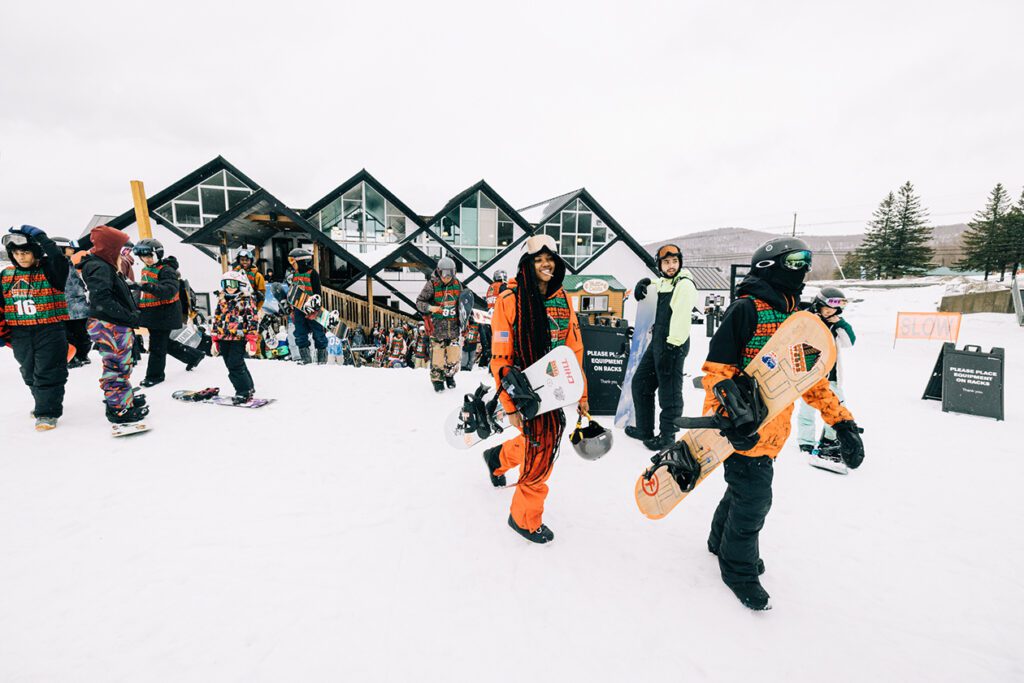
I grew up in a single-parent household in a housing project in New York City. New York City in the 80s was tough, and it’s pretty crazy to survive the violence there. Losing friends, seeing people die… So, for me, to go snowboarding and be able to go to the top of the mountain and just look into the distance… I was just, “wow, this is beautiful!” But, at the same time, not forgetting where I came from: there are people still there in the community, and they’re not getting to see this, to experience this thing that makes me feel like a five-year-old kid. I wanted to bring this happiness, the art of nothingness, letting yourself go and connecting with nature, back to where I came from.
I made this short film on my story, put it on DVD and started handing them out to people, thinking, maybe I find someone like myself who wants to bring this mindset, this Mt Baker mindset, to a program with a holistic approach where it’s not so much about how many kids we can get to come through the doors but how many kids can we take from the hood to the mountain and make them lifetime mountaineers. I met Omar at the screening, and we’ve been working together on Hoods to Woods since 2009.
Omar: Brian introduced snowboarding to ethnic urban communities who had no idea what it was. He created the short film on his journey as a snowboarder since trying to explain what snowboarding was and where it took place was not easy to convey to people who have no connection to mountains or winter sports. This was before Zeb Powell and when the X-Games were just getting started. That short film became the spark, the catalyst, as there was a short Q&A after the film, and Brian spoke on a topic that spoke to me personally. “Let’s bring more kids who look like us into the sport.” The rest was history from that point on.
What were some of the initial challenges you faced?
Brian: It was difficult to start something in an all-white space. People aren’t as receptive. Back when my classmates invited me to go snowboarding, I was very apprehensive. I didn’t want any part in it and was like, “No, I’m not doing that. I’m from the hood.” I know that ignorant mindset because I was ignorant.
Another challenge has been funding. After we started, more people wanted to come. It was difficult to pay for transportation, from a car to a van to a charter bus, and charter buses are not cheap. We were hustling and raising money, and all this money came from the snowboard industry, the culture, and snowboarders. We barely made it for the first few years, with insurance, lunch, and things like that. But we were trying to do something amazing, trying to take the kids to the mountain and not getting a paycheck for it. Now, it’s different because we’re getting grant money, and I can do this full-time. I still take on other jobs as a freelancer because I don’t get paid a competitive salary by the organisation. But it never started like, “Oh, I want to make money; I want us to be successful.” It was just: “Yo, forget all that, what about the kids?”
What does the Hoods to Woods program look like?
Omar: We started with four kids and one car in 2009. Fast-forward to today, and there are a couple of hundred kids and a 56-passenger bus. In the beginning, it was just one program running four days during the winter season. Now, it’s expanded to five programs, held over five days, typically on weekends, throughout the year. Our spring, summer, and fall sessions are held during the week, and we go consecutively for five days. Our goal is to take our youth from never having set foot on a snowboard to confidently and properly riding intermediate and advanced trails.
Our kids come from every walk of life. We don’t care about religion, we don’t care about ethnic background, we don’t care about how you identify yourself. If you’re from a disadvantaged background and you’re dealing with negative things, we want to bring you with us and take you away from these things, even if it’s just one day out of the week for five weeks. It becomes a catalyst for a lot of the kids. I’ve had parents who have come up to me and been like: “My kid has literally turned around: their grades are good (we require report cards), and their behavior is better”.
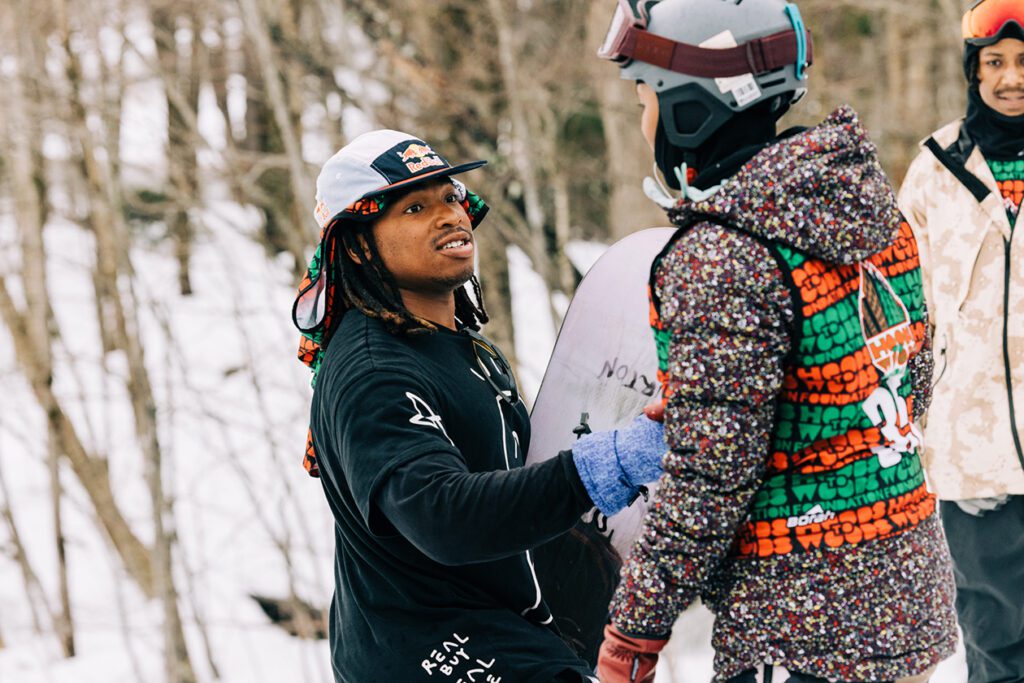
One of the biggest lessons I’ve learnt is that it’s not necessarily about progression for the kids but being in nature. They’re just going to show up, be in the moment, be surrounded by their friends, smile, and enjoy being outside. We recently sent two kids to Mt Hood on a four-day camp, and the kids sent pictures to us, like, “OMG, look at the sky.” You take for granted that there are stars out there when you live in the city, but you never really get to experience their beauty. Things like these can mean the world to them. It can be a life-changing experience to hop on an airplane, fly for seven or eight hours, and be in a place completely different from anything you’ve ever seen.
If you think about it, most kids live within a four-to five-block radius in New York City and its surrounding urban neighbourhood. Most kids don’t leave their neighborhood; that’s what it is. You stick to what you know, and that is why we do this: to help them see beyond that.
Do you think this is one of the initial challenges for people from urban environments to get involved in snowboarding, not being exposed to it because it’s not visible?
Omar: That’s definitely one part of it, the lack of awareness; you don’t know what you don’t know. You can’t be part of something you don’t know exists. Another big hurdle is the financials. Single mum, three kids, two part-time jobs, barely getting by. On what planet is that mum going to afford to take her kids snowboarding? None.
And sometimes you have parents that challenge that because they came from a place where they don’t understand it, like, “Oh, my kid is going to be cold”. The Hoods to Woods social media has had a humongous impact on this, though. The kids now see other kids that look like them laughing and smiling, doing it. They see themselves there. But if our social media doesn’t reach kids who aren’t into snowboarding, they’re never going to see that. And that’s the challenge, trying to convey to the new kids, or their parents, who have never been around outdoor sports, that this is for them, that they can do this and that it’s going to be okay.
But I’ll be honest with you, showing up to a ski resort and there’s no one that looks like you – unless you have that drive and determination, that mindset that I don’t give a fuck – a lot of people be like, “Yeah, no.” People can’t relate. You communicate differently. You act differently. All these folks who are not used to you react to you – and maybe not in the most positive way. And it’s not because they don’t want you there. It’s because they don’t know any better, and that’s why one of the future-facing goals is not so much to get these kids on the boards but to get these kids in the industry. The industry will never change if it’s run by a whole bunch of people who cannot relate to us, don’t look like us, and don’t understand us. Secondly, we need to place established individuals in leadership roles. If your leadership doesn’t reflect the diversity you’re trying to attract, it won’t work. You can hire fifty black employees, but if all the decisions are still being made by, excuse my language, the same old white guys, you won’t break through the barrier. However, when you bring in leaders from underrepresented communities and give them a real seat at the table – people who can communicate what truly matters to these groups – then you’re creating change. That’s when you start making an impact.
Brian: From the first day on the snowboard to the evolution of Hoods to Woods, what the space looked like then compared to what it is looking like now, and the event of Black Lives Matter, a lot of companies and individuals have become more aware. Black Lives Matter was a turning point where companies and individuals were like, “Wow, how can we get involved in these communities? What can we do?” Unfortunately, someone had to die for that to happen.
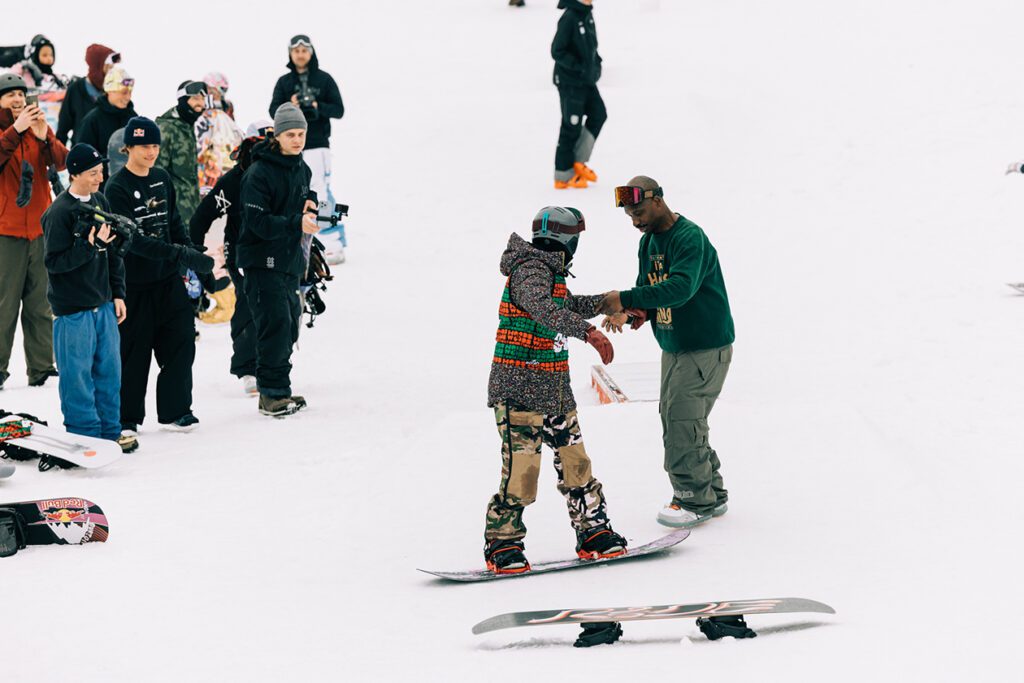
We had a meeting just after BLM happened, and I remember saying, ”Ok, everybody is interested and wants to help, but how do we keep this momentum going and not let it die out.” Whenever something like this happens, someone jumps onto the bandwagon and wants to do something positive. Then, next year, they forget about it. That’s why we’re responsible ourselves to make sure that we have a good line of communication and social media, reaching out to the donor base, sending emails, letting people know what’s happening and being able to get some press, interviews, to help us spread awareness for our mission and our space in general.
And how do you keep the youth engaged once they do become part of the organization?
Brian: From day one, we’ve been thinking about creating lifetime snowboarders and keeping them involved after they turn 18, even if they can’t be part of the program anymore and don’t have the money or resources to return to the mountain. So, after they turn 18, they can become volunteers and end up teaching other kids in the community. This way, they’re still connected to snowboarding, making friendships with other volunteers.
Omar: The cost of entry outside our program makes it challenging for kids to stay engaged, aside from becoming junior volunteers with our organization or other non-profits. How can we create an affordable entry pass for minorities to help them stay involved? I challenge ski resorts to think of young adults from disadvantaged neighborhoods. What steps can be taken to make snow sports more accessible for disadvantaged youth, ensuring they stay engaged and helping to grow the sport for future generations?
Are your programs 100% free?
Omar: Everything is 100% free for the youth in our program. We work really hard to make it accessible for them and we provide everything including equipment and lessons.
Where do you wish to see this organization going in the future?
Omar: I want to see the expansion and growth of Hoods to Woods and any other global organization doing similar work. We got into this not for a name, not for us to be the big shot or shining star, but for us to make a change. The impact on youth is impressionable, can be moulded, and can be changed.
Brian: Hoods to Woods started with the idea of having more than one outdoor activity. We wanted to do kayaking, camping, hiking… but did not have the funding to do all these activities. Now that we are starting to scale up the operations, hopefully, we can get grants to expand. Then snowboarding becomes a pathway to other activities.
The more people you have, the more significant impact you have on creating better humans for the future. People should be connected to nature. You can’t get inner city people to be conscious about the environment if they haven’t stepped foot in these places, so we help to get them to understand why they should want to protect it. I always tell this story: it was four years of Hoods to Woods, and I’m walking down the street in the hood. I see three of our students arguing with some kids on the corner, so I’m like, oh, what’s going on? I walk across the street, thinking there’s going to be a fight, and like, hey hey hey guys what’s happening, and there are these brothers from our organization, and they’re like, “We’re trying to tell these guys about global warming. They think that it’s fake. And we’re telling them that for the last seasons, the snow was different, and it hasn’t been the same.” I was standing there like, holy shit, is this what they were arguing about? They wouldn’t even think about that if it weren’t for Hoods to Woods. Because of us, they’ve stepped foot into these places. You talk about a generational impact. These young adults with kids and their kids grow up and become snowboarders, go hiking and fishing, and have an open mind for this stuff. It’s huge. It’s going to change the future, and that’s why I see the organization getting involved in other outdoor activities and education on environmental awareness. We need that now.
I just want to say thank you to all the sponsors and individuals who have been with us for the last fifteen years and kept this program going, as well as to people like Zeb Powell who are coming to visit us. We couldn’t have done it without you.
